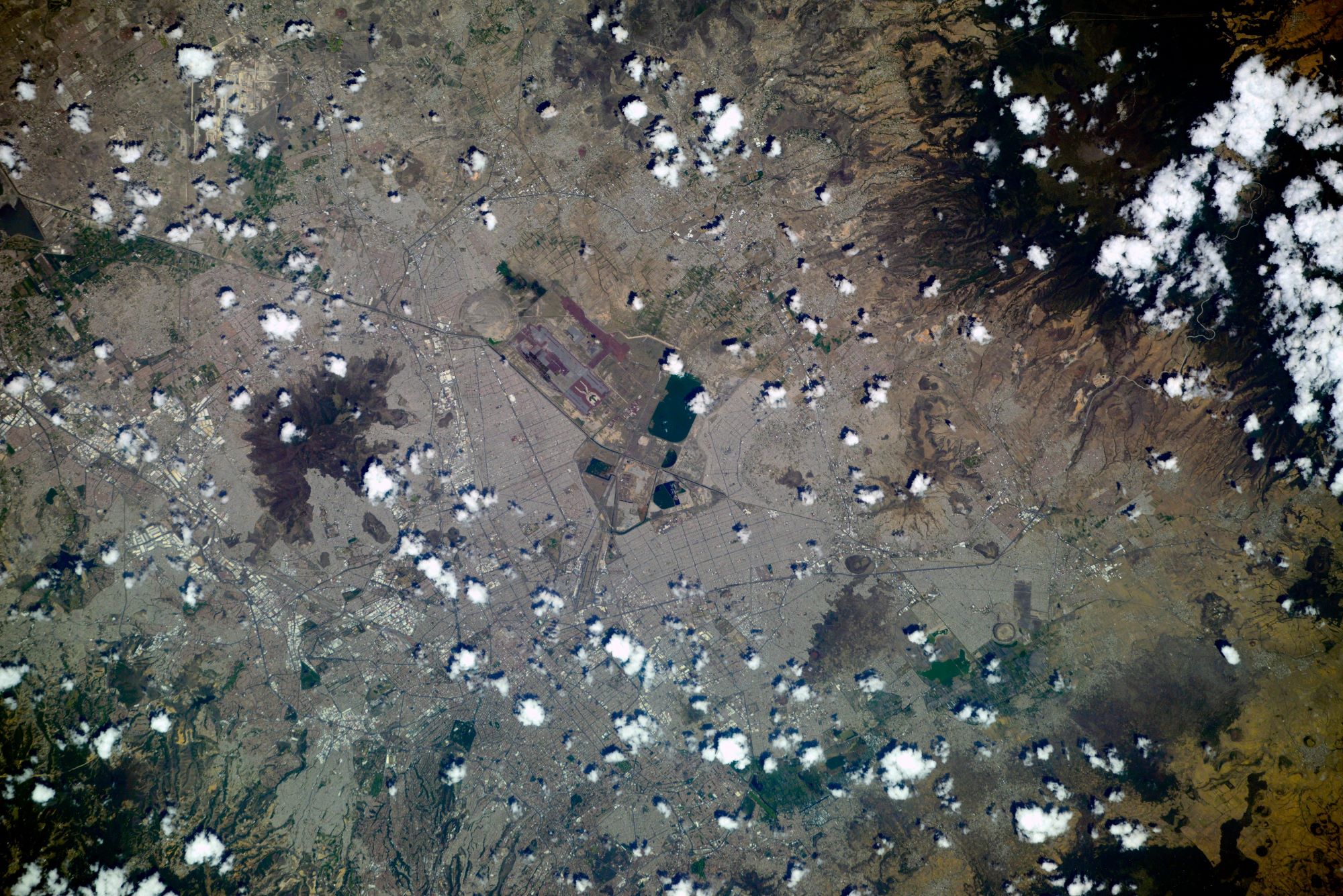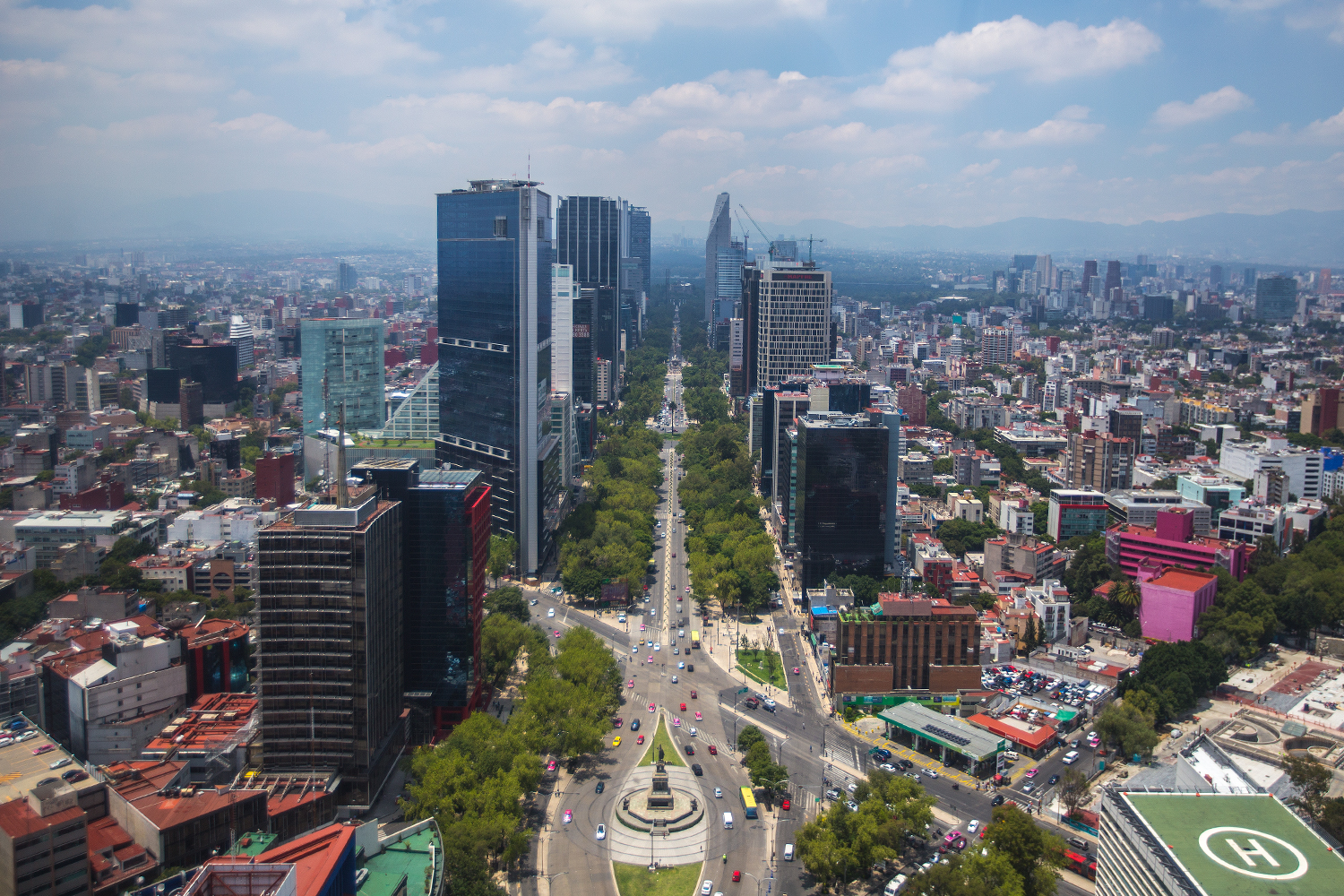[:ja]イワン・ワグナー宇宙飛行士がISSから撮影したメキシコの首都メキシコシティです。

メキシコシティは、国名と同一名称のため「市」に相当する単語を付けて呼ばれるのが通例となっており、メキシコの公用語であるスペイン語では「シウダー・デ・メヒコ」(Ciudad de México) と発音されます。近郊を含む都市圏人口は約2千万人であり、GDP額でもサンパウロ(ブラジル)に次ぐ第2位であり、メキシコのみならずラテンアメリカの経済の中心地の一つです。また、アステカ王国のかつての首都テノチティトランでもありました。メキシコシティの気候は高山気候ですが、標高2240mの高地にあるものの緯度は低いため、一年中温暖な気候に恵まれています。また、5月から10月の雨季と11月から4月にかけての乾季に分かれ、降雨は雨季に集中しています。市内には高層ビルやホテルが林立し、道路はいつも車で埋め尽くされています。排気ガス規制が緩く、その上4000メートルを超える山々に囲まれている盆地に位置するため汚染された空気が拡散しにくく、高地による空気の薄さとあいまって1980年代以降、自動車の排気ガスによる大気汚染が深刻な問題となっています。
地上の様子はこちらです。

参考文献: Ivan Vagner’s Tweet
地球俯瞰画像を見る: LiVEARTH
[Earthview Wonders] No.1327: Mexico City🇲🇽
Astronaut Ivan Vagner captured from ISS Mexico City, the capital of Mexico.

Mexico City is located in the Valley of Mexico, a large valley in the high plateaus in the center of Mexico, at an altitude of 2,240m. The population of Greater Mexico City is over 20 million which makes it the second-largest metropolitan area in the Western Hemisphere (behind São Paulo, Brazil). The city was originally built on an island of Lake Texcoco by the Aztecs in 1325 as Tenochtitlan, which was almost completely destroyed in the 1521 Siege of Tenochtitlan and subsequently redesigned and rebuilt in accordance with the Spanish urban standards. Mexico City has a subtropical highland climate, due to its tropical location but high elevation. By the 1990s Mexico City had become infamous as one of the world’s most polluted cities. Despite the cleanup, the metropolitan area is still the most ozone-polluted part of the country, with ozone levels 2.5 times beyond WHO-defined safe limits.
The local scenery on the ground is as follows.

Reference: Ivan Vagner’s Tweet
See earthview photo gallery: LiVEARTH[:]